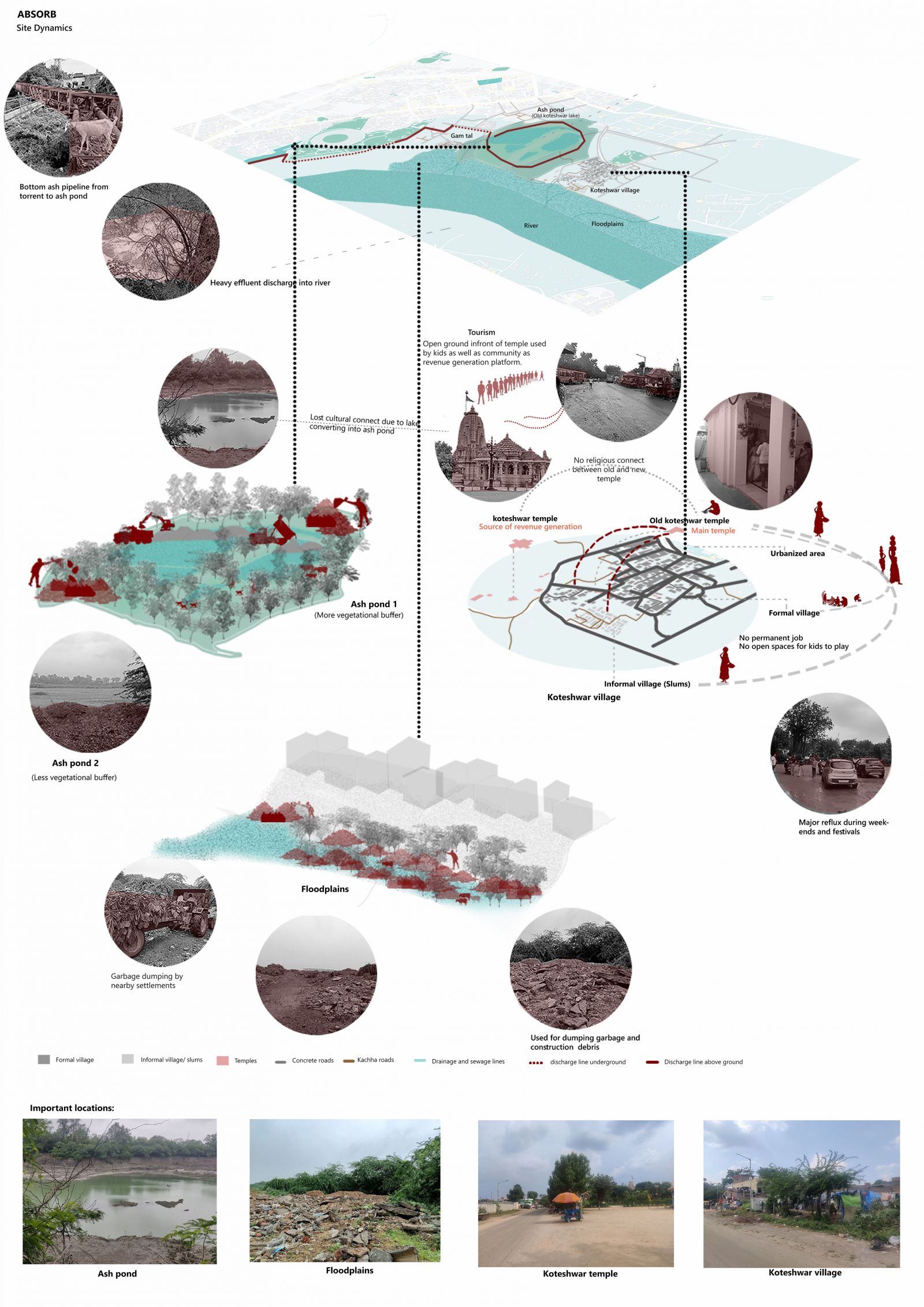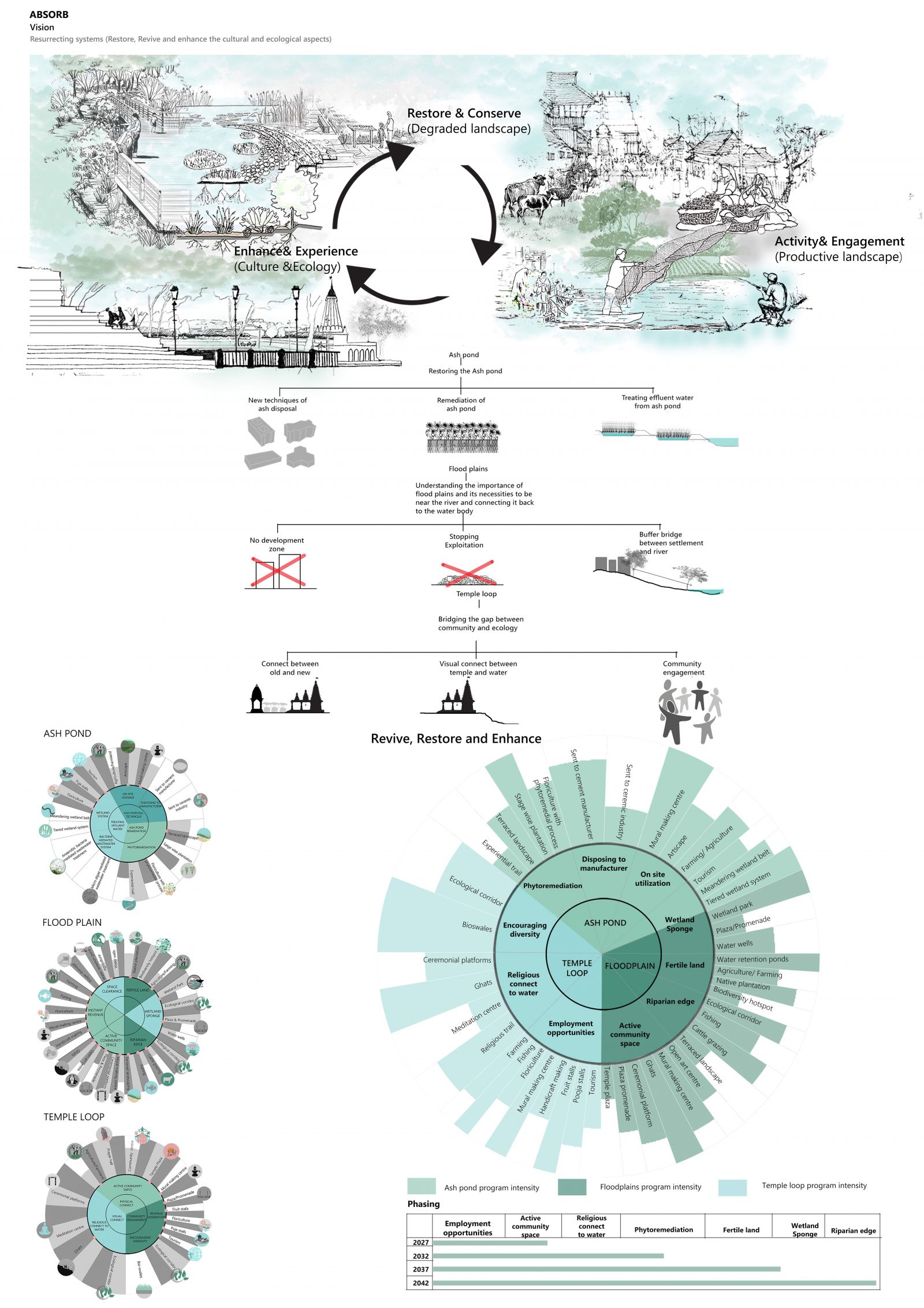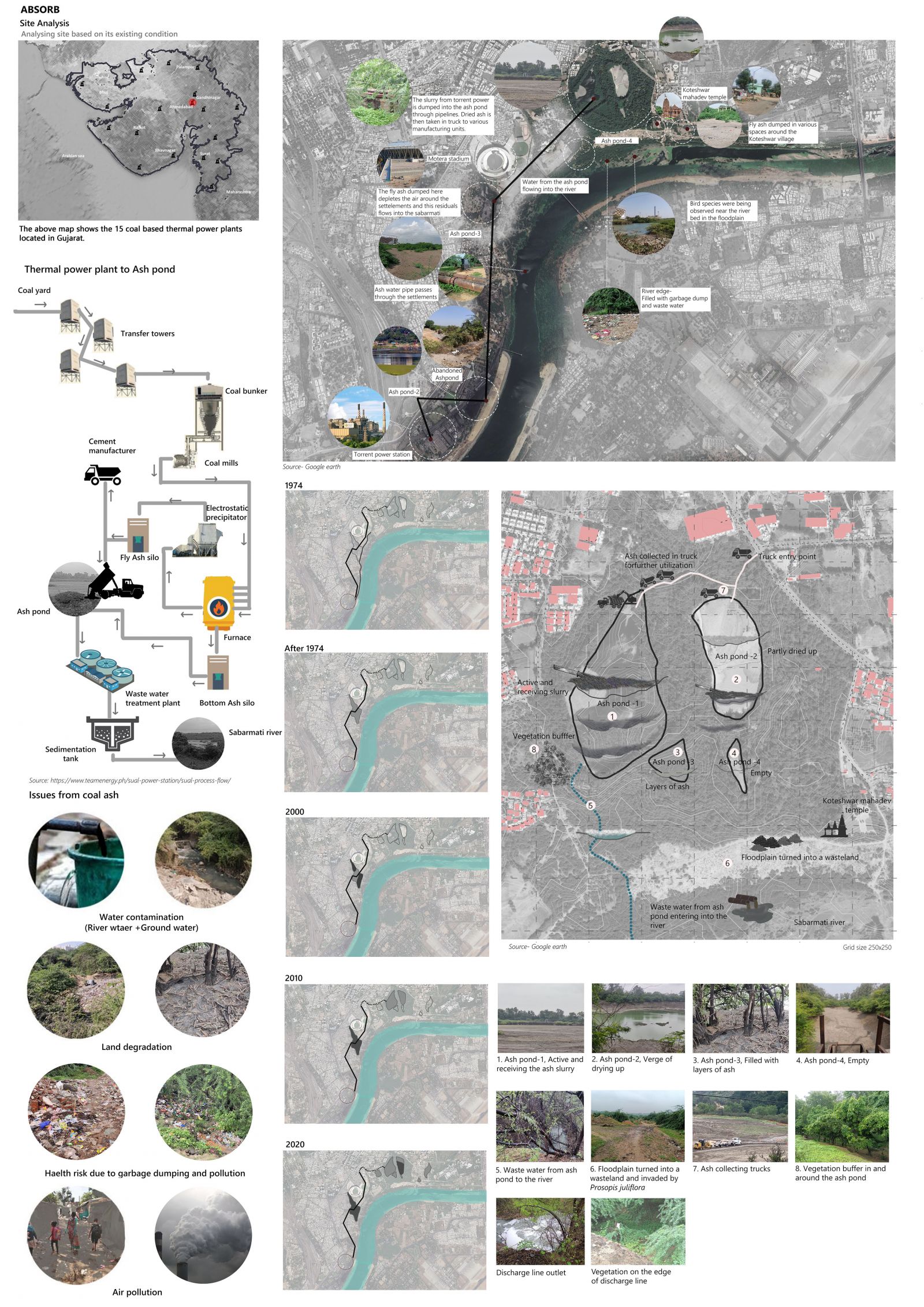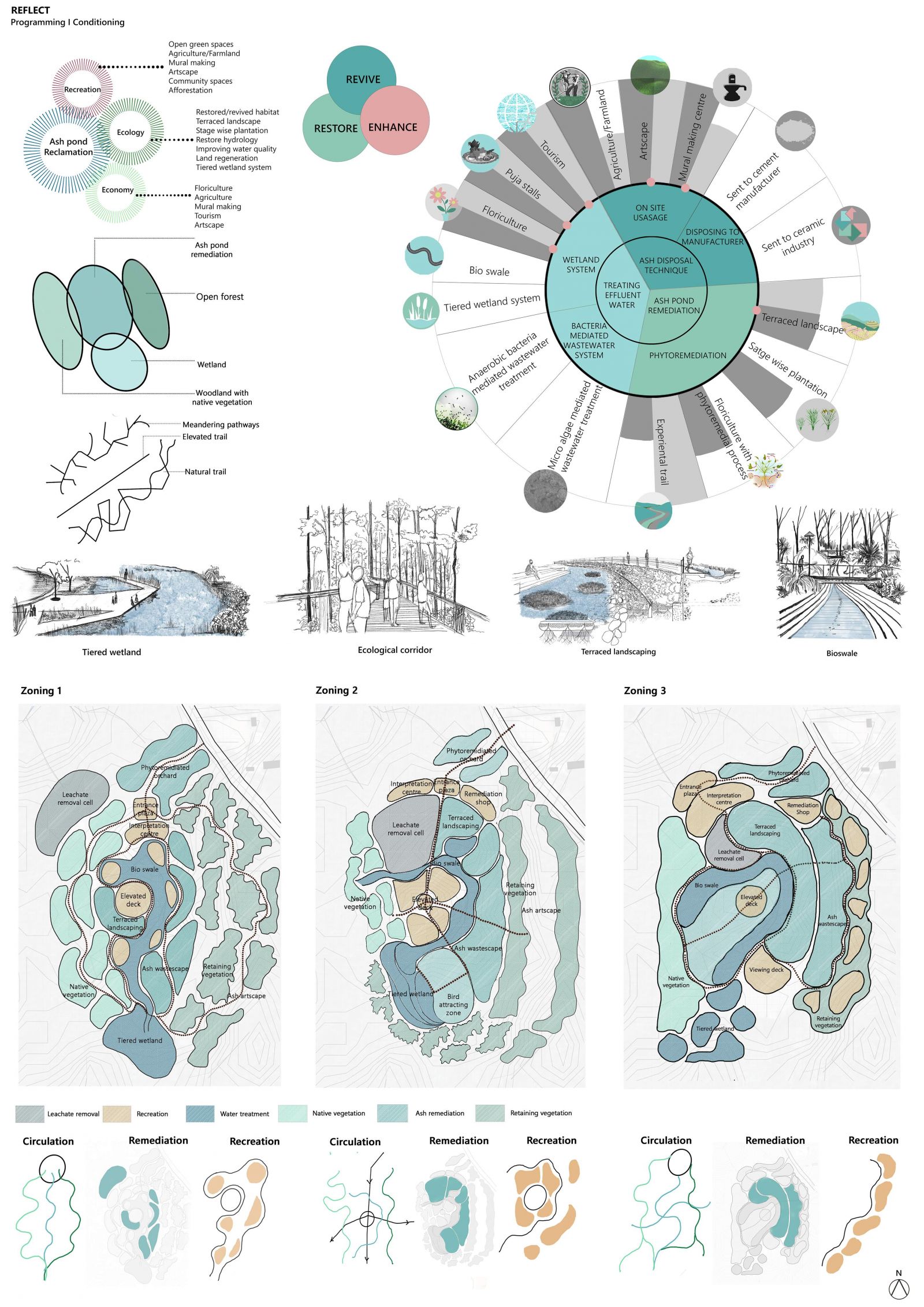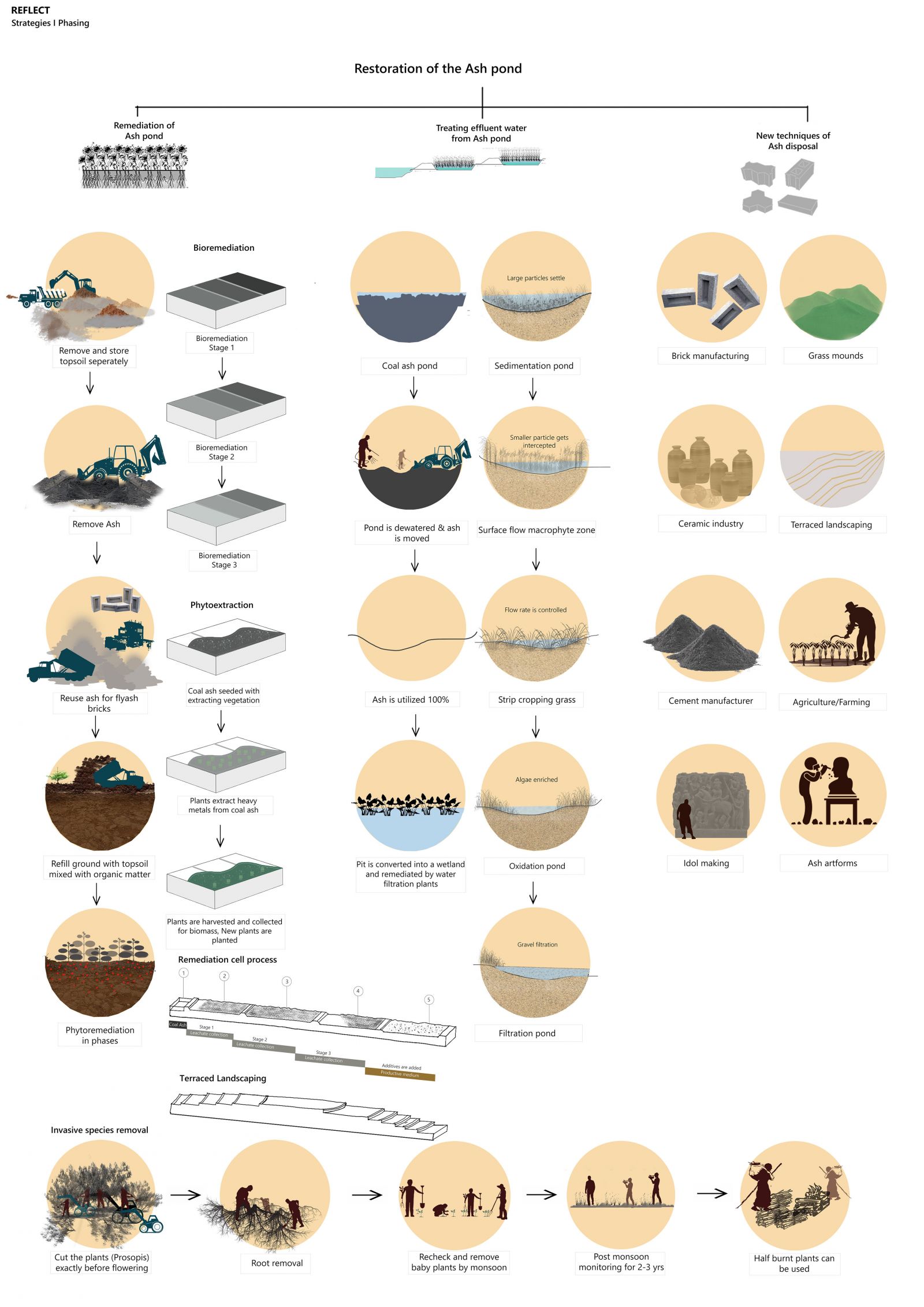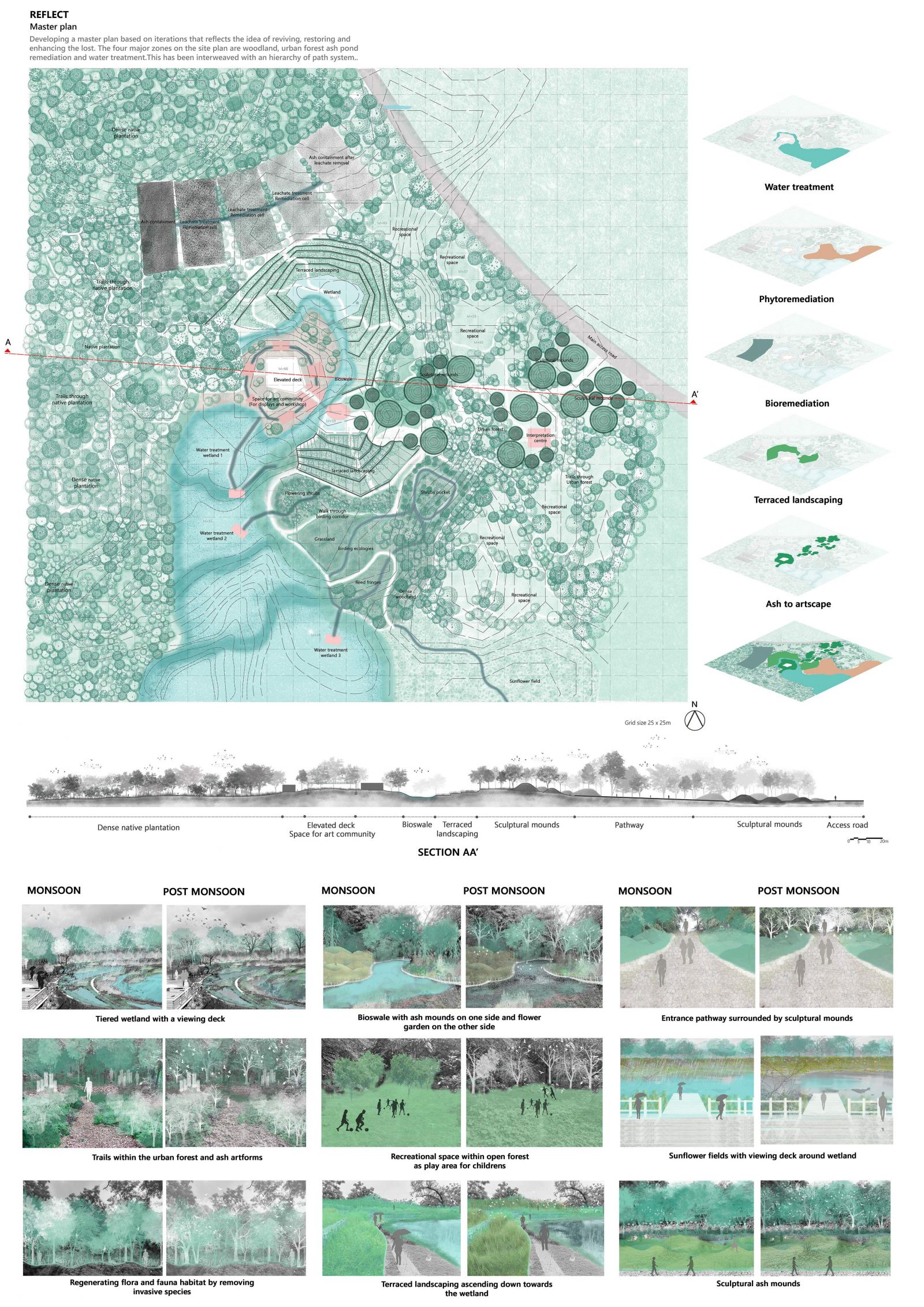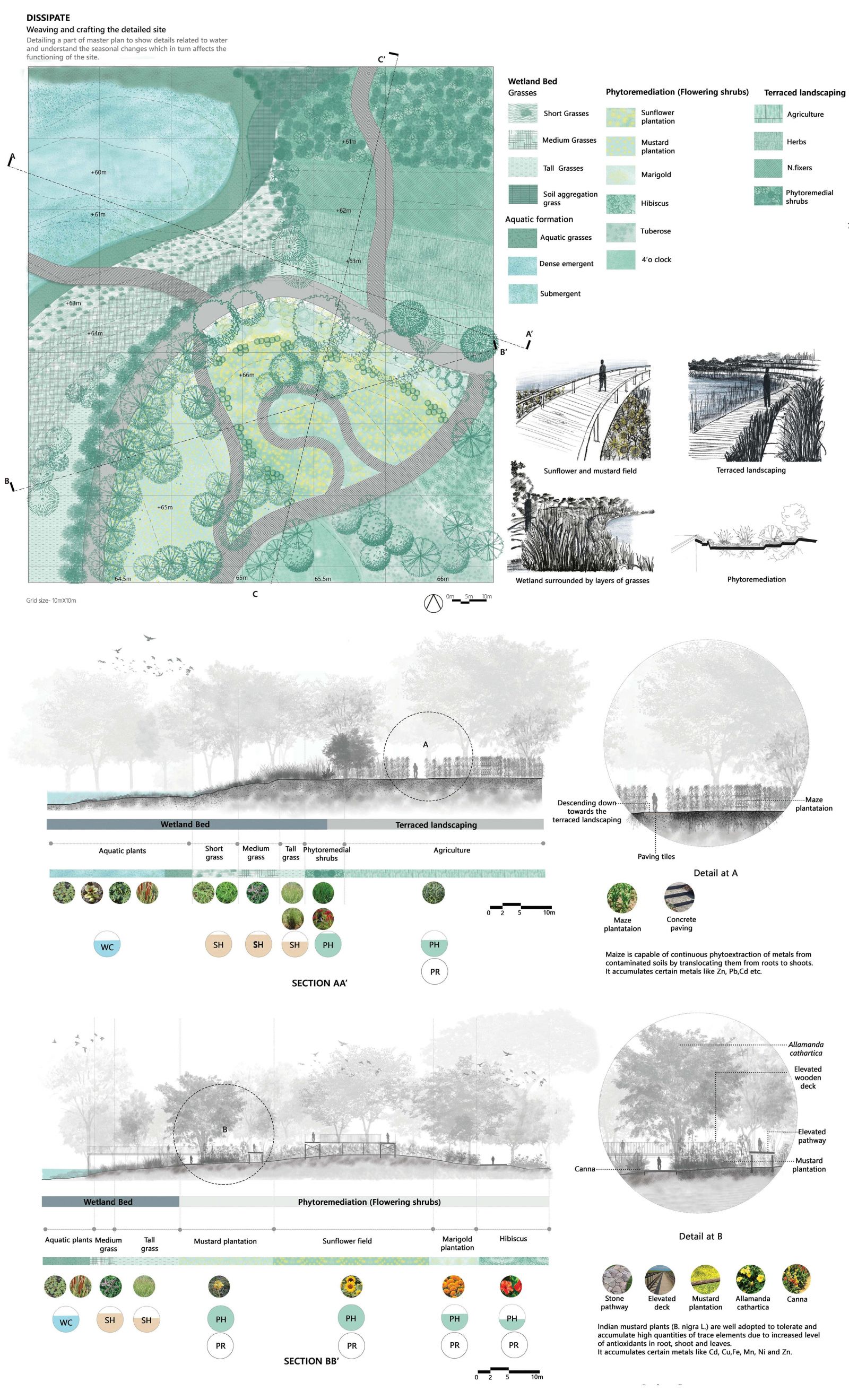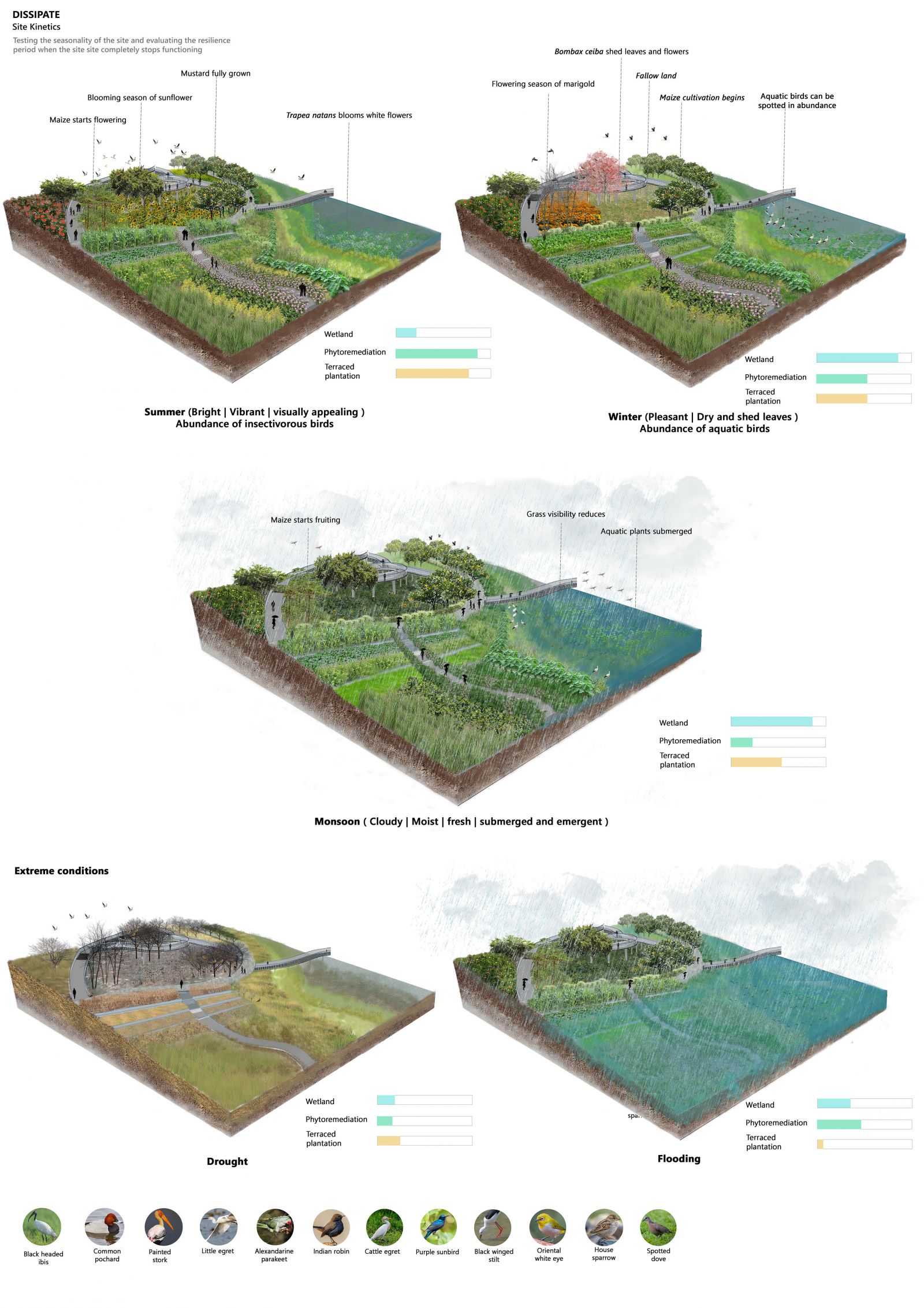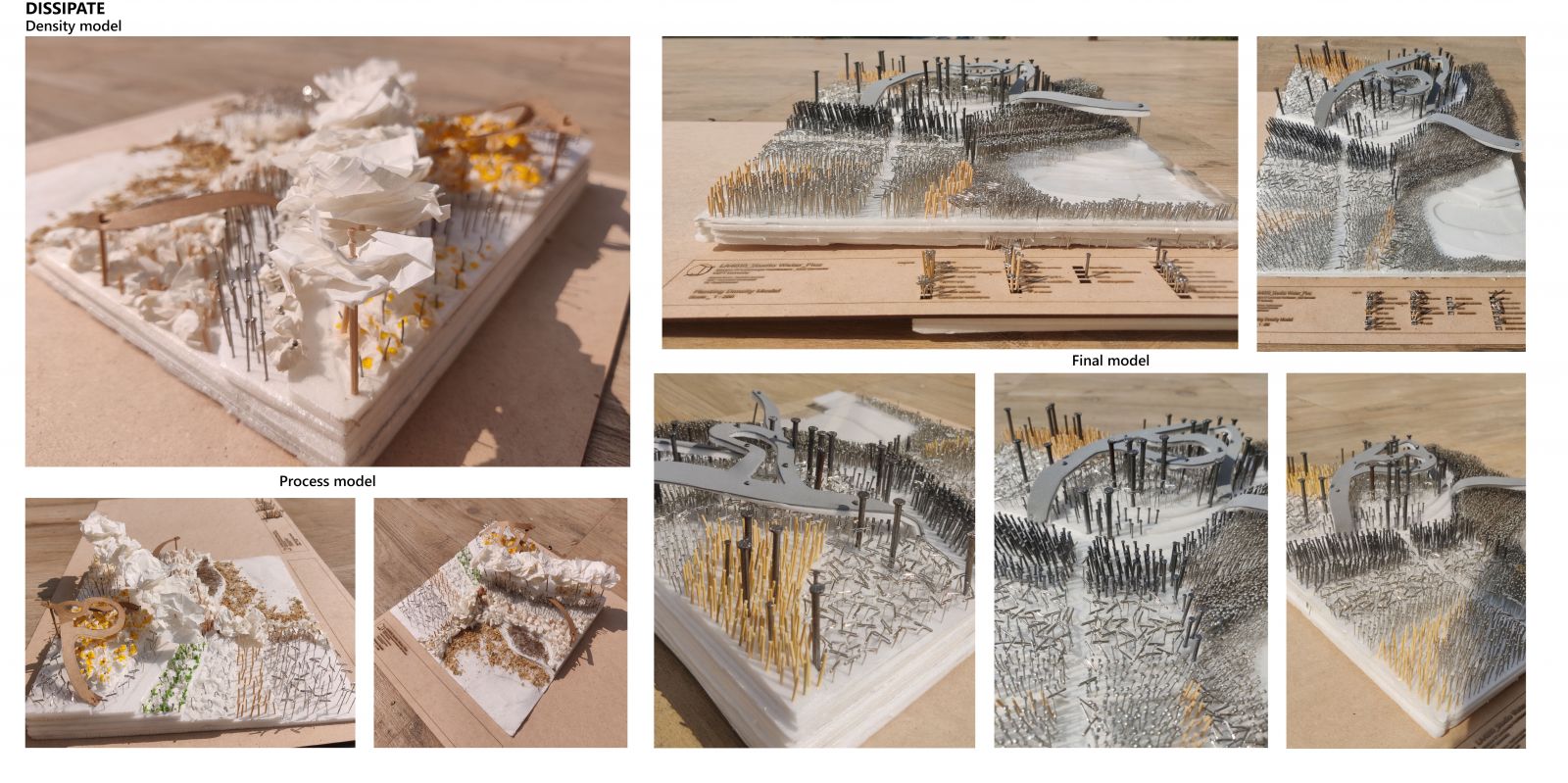Your browser is out-of-date!
For a richer surfing experience on our website, please update your browser. Update my browser now!
For a richer surfing experience on our website, please update your browser. Update my browser now!
The project titled Reclaiming the Grey’s aims to remediate the Ash pond, a designated wasteland for dumping fly ash, and convert it into an ecologically responsive design. With the surging need of power generation, numerous sites which are economically unproductive have been converted into ash dumping areas. This makes ecological sites turn into environmentally deteriorated wastelands. Moreover, the unique aspect of the site is the adjacent Sabarmati river which creates a juxtaposition between the degraded Ash scape and the thriving ecological habitat. This coal ash remediation project will showcase that will come together as a space to demonstrate the positive future of such wastelands. On one hand the project will restore and enhance the lost by treating the effluent, explore engineered and creative ways of treating and utilizing fly ash, and on the other, will restore the habitats along the river edge.
View Additional Work